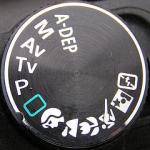

 And then, I took this list to a bunch of really talented photographers I knew. And asked them to help me fill it in. Some were gentle and just laughed at me. Some became frustrated (particularly my husband) because I didn’t grasp that ‘every situation is different’. But I did grasp it: I just needed a starting point.
And then, I took this list to a bunch of really talented photographers I knew. And asked them to help me fill it in. Some were gentle and just laughed at me. Some became frustrated (particularly my husband) because I didn’t grasp that ‘every situation is different’. But I did grasp it: I just needed a starting point.
Then I met a gem of a man during a one-on-one course and he smiled slightly and said… let me tell you the Photographer’s Cheat Sheet formula and then YOU can fill it in.
So now let me share that formula with you!
The secret to taking amazing photos is simple: f/8 and be there.
This secret phrase has been attributed to a lot of people over the years but most seem to settle on Weegee as the originator of the phrase. But what the heck does it mean?
Put your camera in aperture priority (normally marked A or Av) and set your f-stop to f/8. Always. Every time.
Set your ISO to 100. Each and every time.
 Then look at the lens you have on your camera at the time and half its longest length. If it’s a 70-300, then half its length, making it 150. If it’s an 18 -55 then half its length is 27.5. If it’s a 50mm prime then half its length equals 25. We’ll call this the magic number.
Then look at the lens you have on your camera at the time and half its longest length. If it’s a 70-300, then half its length, making it 150. If it’s an 18 -55 then half its length is 27.5. If it’s a 50mm prime then half its length equals 25. We’ll call this the magic number.
Ok… so here’s the trick. When you press your trigger button down halfway, it will show you on your screen what the Shutter Speed is. You want the Shutter Speed to have a faster speed than the magic number. so if when focusing, you have a speed of 1/250 and you are using a 70-300 lens, your settings are fine. And your photos will look GREAT.
If you have a speed of 1/50 and you are using a 70-300 lens, you are obviously going to be in trouble. So now you need to wind your f-stop down to a lower number than 8, as far as it will go until that speed goes up toward the magic number. If it arrives at that number at f-stop 5.6, then great, your pictures will be awesome. If you haven’t reached that magic number, then that’s okay. There’s a solution to that too. Now you want to increase ISO step by step until that magic number is faster than half the length of your lens.
If you do that, you can shoot indoors without a flash! This simple little formula works a treat. Now the second part of the saying is the most important part. Be There. Take your camera with you everywhere so you never miss a moment.
Some people believe that f/11 or f/22 is better as a starting point, but by applying the same rules and techniques to those original f-stops will hold you in good stead for great shots! Now if you have a camera with the right dials but you can’t remove the lens, don’t fret. Visit dpreview and look up your camera and it will tell you the length of your lens.
So remember the f/8 and be there rule. It makes finding that starting point oh so easy to find!
.
.
.



